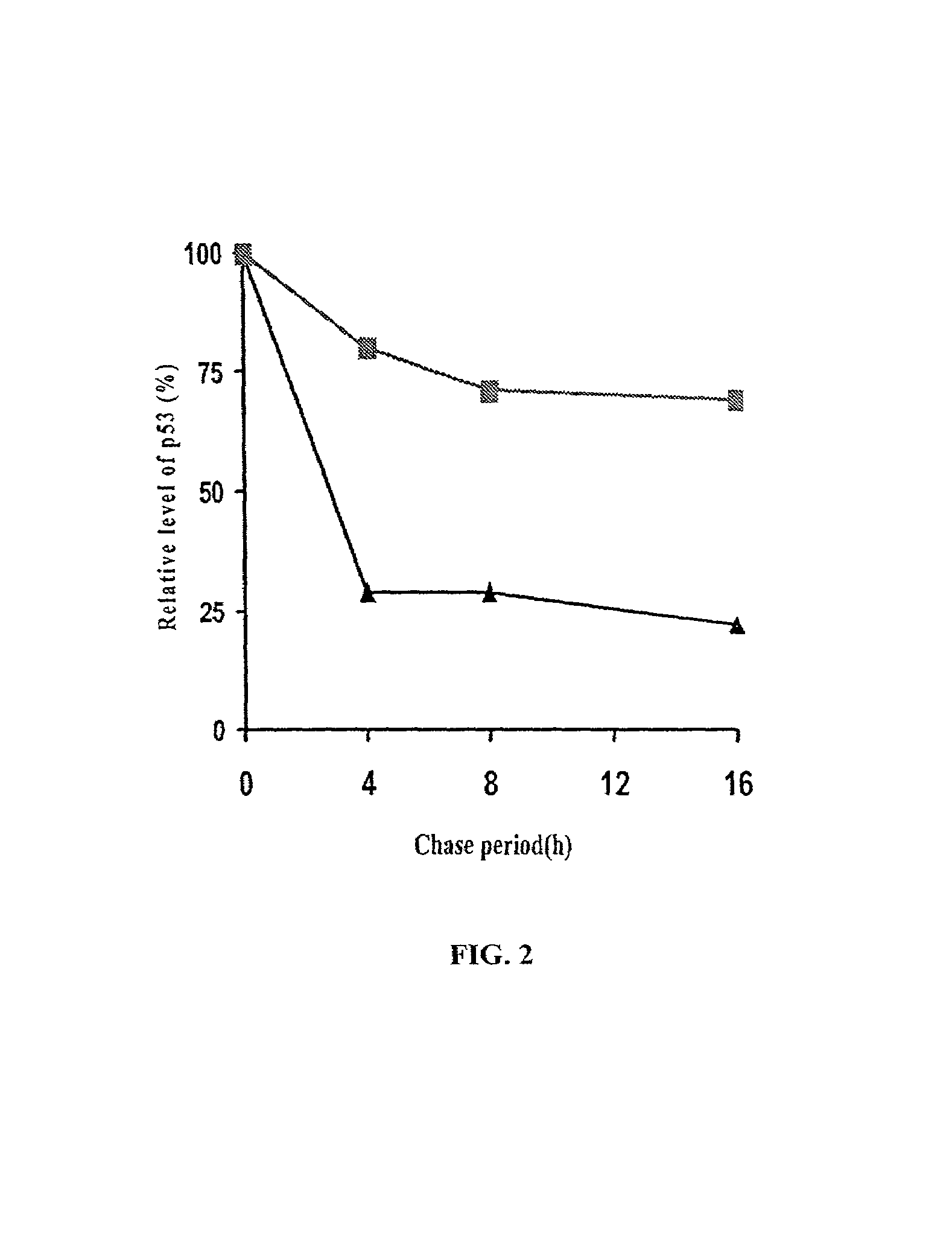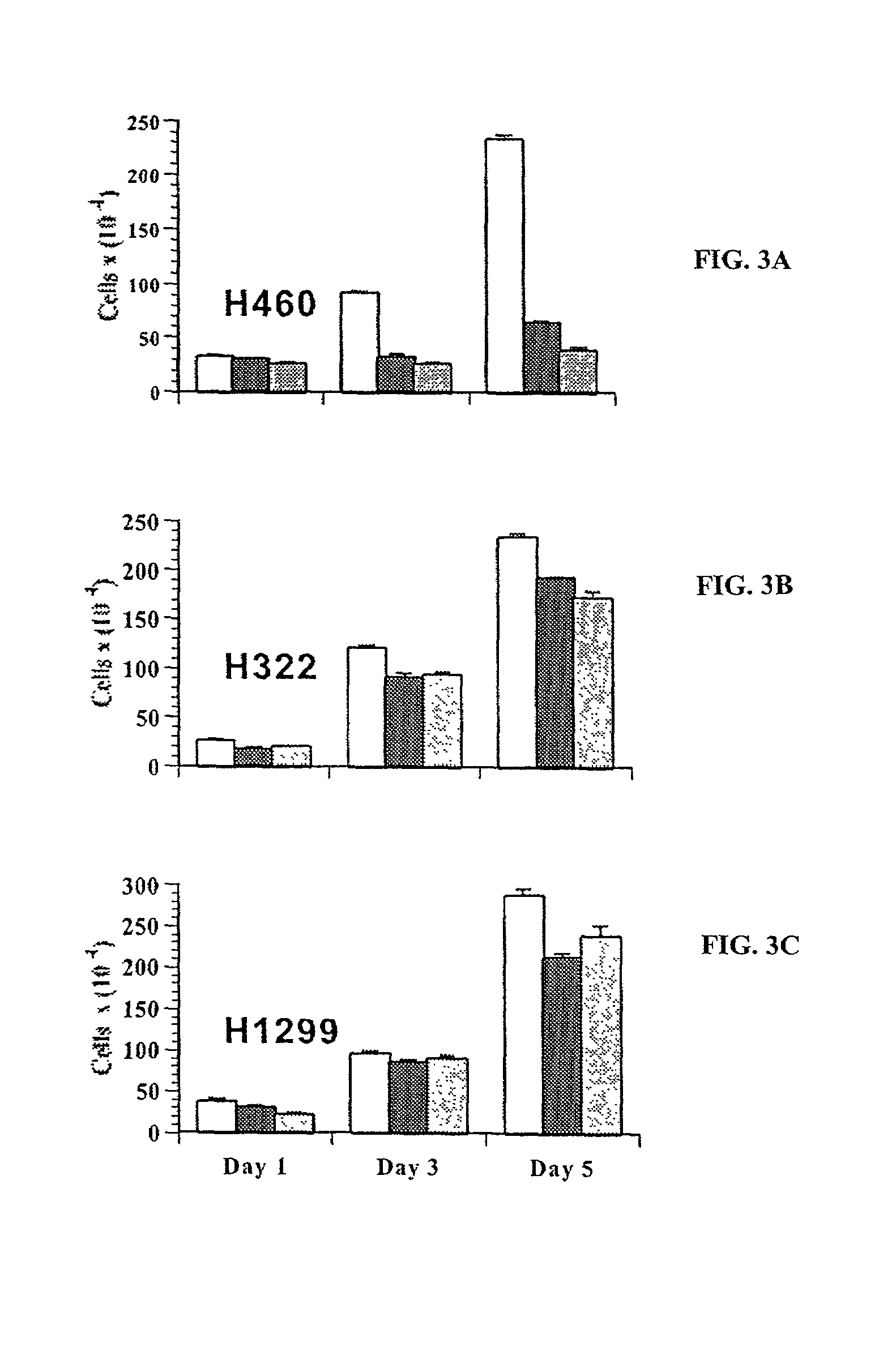Antihelminthic drugs as a treatment for hyperproliferative diseases
a technology of antihelminthic drugs and hyperproliferative diseases, applied in the field of cancer therapy, can solve the problems of affecting the survival rate of helminths, and affecting the survival rate of helminths, and achieve the effect of inhibiting the growth of hyperproliferative cells
- Summary
- Abstract
- Description
- Claims
- Application Information
AI Technical Summary
Benefits of technology
Problems solved by technology
Method used
Image
Examples
example 1
Materials and Methods
Chemicals
[0201]Methyl 5-benzoylbenzimidazole-2-carbamate (Mebendazole (MZ)) and methy 5-(phenylthio)-2-benzimidazole-2-carbamate (Fenbendazole (FZ)) were purchased from Sigma Chemical Company (St. Louis, Mo.). All other chemicals were purchased from Sigma unless otherwise indicated.
Cell Lines
[0202]All non-small cell lung cancer (NSCLC) cell lines except A549 were gifts from Drs. Adi Gazdar and John Minna (The University of Texas Southwestern Medical Center, Dallas, Tex.). All other cell lines were obtained from the American Type Culture Collection (Rockville, Md.). Cell lines were grown according to the directions provided by suppliers. All media were supplemented with 10% heat-inactivated fetal bovine serum (Life Technologies, Inc.) and antibiotics (100 mg / ml of streptomycin / ml and 100 I.U. of penicillin / ml; Life Technologies, Inc.). MZ and FZ were dissolved in dimethylsulfoxide (DMSO) and then diluted in phosphate-buffered saline (PBS) (1:1). When reagents con...
example 2
Results
BZ-Induced Apoptosis in Human NSCLC Cell Line H460
[0211]The inventors tested the effect of BZ treatment on the human NSCLC cell line H460. H460 cells were treated with FZ, (0.05 μg / ml) or MZ (0.5 μg / ml) and the morphological changes associated with apoptosis were identified. Widespread loss of viability was noted by gross examination of the cells at 24 and 48 hrs after treatment using a phase-contrast light microscope. After treatment for 48 h, the cells became rounded and loosely attached to the plate, suggesting the cells were losing viability. Further analyses of the cell samples showed that the cells were undergoing apoptosis. Most of the morphological hallmarks associated with apoptosis were detectable, including cell shrinkage, DNA fragmentation and chromatin condensation. Chromatin condensation was noted under a fluorescence microscope at 24 h after treatment, by staining the nuclei with Hoechst 33342 fluorescent dye. The DNA strand breaks typical of the apoptosis were...
example 3
Materials and Methods
In Vitro Cell Culture and Proliferation Assay
[0226]Cells of the human non-small cell lung cancer (NSCLC) cell line A549, WI-38 normal fibroblast (American Type Culture Collection, Rockville, Md.) and H460 (a gift from Drs. Adi Gazdar and John Minna. University of Texas Southwestern Medical Center, Dallas) were seeded on culture plates (2×104 cells / well) in F12 and RPMI medium, respectively, supplemented with 10% heat-inactivated fetal calf serum and antibiotics. HUVEC were grown in medium supplemented with growth factor (Clonetics, San Diego). The cells were then exposed to MZ dissolved in dimethyl sulfoxide (DMSO) when grown to 40-50% confluence. Cell growth was monitored by counting the cells using a hemocytometer.
In Vivo Tumor Growth in Nu / Nu Mice
[0227]Mice that had received 3.5 Gy of total body irradiation 1 day before inoculation were given injections into the shoulder of 2×106 tumor cells. Mice were then given MZ oral suspension (100 mg Vermox chewable tab...
PUM
| Property | Measurement | Unit |
|---|---|---|
| body weight | aaaaa | aaaaa |
| temperatures | aaaaa | aaaaa |
| temperatures | aaaaa | aaaaa |
Abstract
Description
Claims
Application Information
 Login to View More
Login to View More - R&D
- Intellectual Property
- Life Sciences
- Materials
- Tech Scout
- Unparalleled Data Quality
- Higher Quality Content
- 60% Fewer Hallucinations
Browse by: Latest US Patents, China's latest patents, Technical Efficacy Thesaurus, Application Domain, Technology Topic, Popular Technical Reports.
© 2025 PatSnap. All rights reserved.Legal|Privacy policy|Modern Slavery Act Transparency Statement|Sitemap|About US| Contact US: help@patsnap.com



